Join More Than 50,000+ Subscribers and get latest camera news and rumors
NEW CAMERA VIDEOS ON YOUTUBE
|
By admin, on August 16th, 2013

Fujifilm and Panasonic New Organic Sensor May arrive in 2014, It offers industry highest dynamic range of 88dB and 1.2 times more sensitive than conventional sensors. Read the Full Press Release Below
Continue reading Fujifilm and Panasonic New Organic Sensor Coming
By admin, on June 20th, 2013
Sony organic sensor patent is surfaced over the web today, take a look at the details below
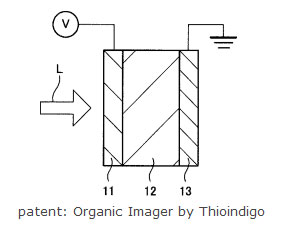
Description and self-interpretation of the patent literature (translated by google)
- Patent Publication No. 2013-118335
- Publication date 2013.6.13
- Filing date 2011.12.5
- Applicant Sony
- Comprising:
- Hydrogen bonded to carbon 6 of the # 4 or thioindigo is substituted with a functional group, an organic photoelectric conversion material.
- [0065]
- It may be red component is removed by absorption by the color filter 44C cyan, green component is removed by absorption by the organic photoelectric conversion layer 42, is taken out at the blue blue component remaining. It is possible blue component is removed by absorption by the color filter 44Y of the yellow, green component is removed by absorption by the organic photoelectric conversion layer 42, is taken out at the red red component remaining. With the above configuration, in the solid-state imaging device 30 according to the present embodiment, it is possible to output the color signal separated green, blue, and red.
If you have some time
See More – Sony Patent
Also see:
src- egami.com
By admin, on June 1st, 2013
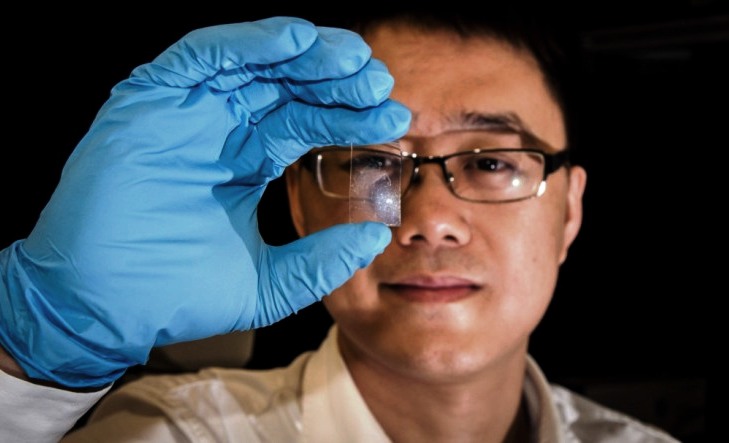 Just imagine the low light performance of your camera when your current sensor become 1000 times more sensitive to light, Scientists at Nanyang Technological University in Singapore have announced the development of a sensor made of graphene (made up of pure carbon substance) that is 1,000 times more sensitive to light and consumes 10 times less power compared to traditional CMOS or CCD sensors, Just imagine the low light performance of your camera when your current sensor become 1000 times more sensitive to light, Scientists at Nanyang Technological University in Singapore have announced the development of a sensor made of graphene (made up of pure carbon substance) that is 1,000 times more sensitive to light and consumes 10 times less power compared to traditional CMOS or CCD sensors,
Graphene sensor will initially used in surveillance cameras and in satellites before implementing to DSLRs and point-and-shoot, according to the researchers at NTU, once the sensor reaches mass production, it will be up to five times cheaper than CMOS or CCD sensors.
The newly developed Graphene sensor is definitely a huge technological breakthrough that will revolutionize the photographic industry.
src-sciencedaily image credit
By admin, on May 24th, 2013
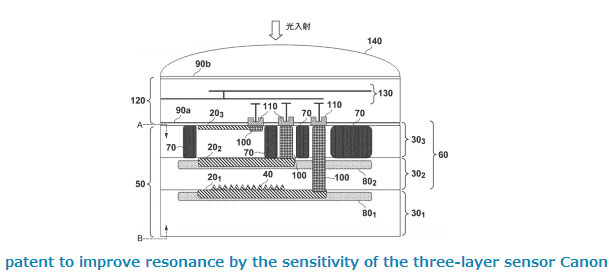
Canon new Three-Layer sensor patent surfaced over the web, the three layer sensor will increase the sensitivity & Overall performance of the camera take a look at the details below,
Description and self-interpretation of the patent literature / Translated by google
- Patent Publication No. 2013-93553
- Publication date 2013.5.16
- Filing date 2011.10.4
- Imaging element of three-layer structure
- Photodiode deep layer (hereinafter, PD) in the charge is diffused into the substrate
- Thus sensitivity is poor red
- Canon patent of
- I as a photonic crystal of irregular shape, the boundary surface of the PD of red or green,
- In the periodic structure of uneven spacing, less than twice the 1/4 times or more the wavelength of light, or I shall be two times or less 1/2 times or more
- Irregular shape has the properties to be spatially-localized or resonant light
- The incident light is diffracted, it combines with the light of the boundary plane, the resonant
- Prolonged exists than normal, the light becomes easy to be absorbed by the PD Thus
Also See – Canon Sensor Image Quality Trapped in Time | See more Canon Patents
src- egami.blog.so-net.ne.jp/2013-05-22
By admin, on January 26th, 2013
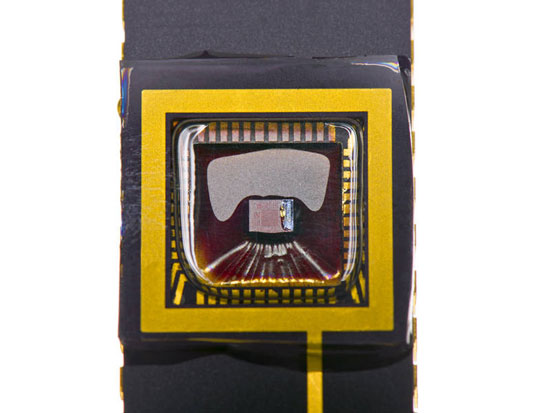 Strong performance: During tests, the organic sensors proved to be up to three times more sensitive to light than conventional CMOS sensors. Photo: A. Heddergott / TUM Strong performance: During tests, the organic sensors proved to be up to three times more sensitive to light than conventional CMOS sensors. Photo: A. Heddergott / TUM
Researchers from Technische Universität München (TUM) have developed a new generation of image sensors that are more sensitive to light than the conventional silicon versions, with the added bonus of being simple and cheap to produce. They consist of electrically conductive plastics, which are sprayed on to the sensor surface in an ultra-thin layer. The chemical composition of the polymer spray coating can be altered so that even the invisible range of the light spectrum can be captured. This opens up interesting new development possibilities for low-cost infrared sensors aimed at compact cameras and smartphones (Nature Communications).
Many compact and cellphone cameras contain silicon-based image sensors produced using CMOS (complementary metal oxide semiconductor) technology. Prof. Paolo Lugli and Dr. Daniela Baierl from TUM have developed a cost-effective process to improve the performance of these CMOS sensors. Their approach revolves around an ultra-thin film made of organic compounds, in other words plastics.
The challenge lay in applying the plastic solution to the surface of the image sensors. The researchers tested spin- and spray-coating methods to apply the plastic in its liquid, solution form as precisely and cost-effectively as possible. They were looking for a smooth plastic film that is no more than a few hundred nanometers thick. Spray-coating was found to be the best method, using either a simple spray gun or a spray robot.
 Ultra-thin: Organic sensors can be applied to CMOS chips over large and small surfaces, as well as to glass or flexible plastic films. Photo: U. Benz / TUM Ultra-thin: Organic sensors can be applied to CMOS chips over large and small surfaces, as well as to glass or flexible plastic films. Photo: U. Benz / TUM
Thin coating with high sensitivity to light
Organic sensors have already proven their worth in tests: They are up to three times more sensitive to light than conventional CMOS sensors, whose electronic components conceal some of the pixels, and therefore the photoactive silicon surface.
Organic sensors can be manufactured without the expensive post-processing step typically required for CMOS sensors, which involves for example applying micro-lenses to increase the amount of captured light. Every part of every single pixel, including the electronics, is sprayed with the liquid polymer solution, giving a surface that is 100 percent light-sensitive. The low noise and high frame rate properties of the organic sensors also make them a good fit for cameras.
Potential for developing low-cost infrared sensors
Another advantage of the plastic sensors is that different chemical compounds can be used to capture different parts of the light spectrum. For example, the PCBM and P3HT polymers are ideal for the detection of visible light. Other organic compounds, like squaraine dyes, are sensitive to light in the near-infrared region.
“By choosing the right organic compounds, we are able to develop new applications that were too costly up until now,” explains Prof. Paolo Lugli, who holds the Chair of Nanoelectronics at TUM. “The future uses of organic infrared sensors include driver assistance systems for night vision and regular compact and cellphone cameras. Yet, the lack of suitable polymers is the main hurdle.”
via – tum.de/nc/en/about-tum/news/press-releases/short/article/30292/
By admin, on April 11th, 2012
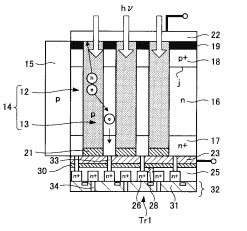
Sony hybrid organic & inorganic sensor patent, the patent describes the sensor is made up of both organic and inorganic materials, the major details below
Translated by google
Sony patents pending on the imaging element of the hybrid formula that combines the benefits of both organic and inorganic materials. Also excellent resolution, there is no false colors since it does not require further OLPF In addition, the high sensitivity superior to be done by the organic photoelectric conversion layer. The organic layer is not suitable as high-speed readout, inorganic layer is done in the movement of the charge, seems to have and also allows high-speed readout. It might have appeared to great imaging element in the future.
Self-interpretation and summary, Patent Document
- Patent Publication No. 2012-49289
- 2012.3.8 Release Date
- 2010.8.26 filing date
- Known art
- Silicon photodiode based on the (hereinafter, PD)
- A typical imaging device of this type
- (Causing a false color) low-pass filter must have a color filter or
- Electron transfer rate is faster
- Drive can be stable at high speed
- Light absorption rate is poor
- Also need 3μm thickness of the PD
- A certain amount of light loss due to a color filter or low-pass filter
- Organic layer
- Using the organic film with a sensitivity to each wavelength
- Low-pass filter and a color filter (false color does not occur) unnecessary
- For light absorption coefficient is greater than the silicon, thin film can be
- You can create a variety of shapes
- Mobility of electrons is small
- Non-high-speed operation
- With current technology, adhesion, durability, there is a difficulty in mass production
- Sony’s patent
- Organic layer
- Photoelectric conversion is performed
- The shape of the cylinder
- RGB three types of organic material are stacked in the depth direction
- Inorganic layer (semiconductor layer)
- Charge transfer is carried out
- Leads to a charge storage section
- Back-illuminated (BSI)
Read more egami (japanese blog)
By admin, on January 27th, 2012
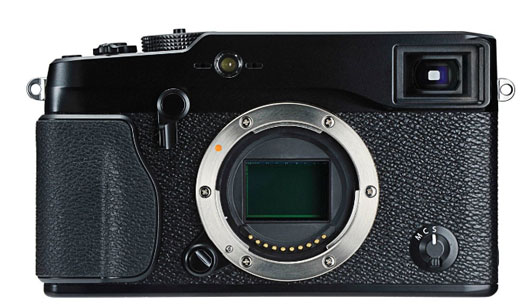 Fujifilm X Pro 1 is available in japan from Feb 18th of 2012, the Pricing is still open, but right now Japanese retailers ask 150,000 yen (approx $1,929 or 1,464 EUR) for the body and the 35mm f/1.4 lens will cost you approx 54,800 yen (approx $705). Fujifilm X Pro 1 is available in japan from Feb 18th of 2012, the Pricing is still open, but right now Japanese retailers ask 150,000 yen (approx $1,929 or 1,464 EUR) for the body and the 35mm f/1.4 lens will cost you approx 54,800 yen (approx $705).
|
KEEP THIS BLOG ALIVE - Support New Camera Buy Canon Lenses, Buy Music CD or Digital Camera at amazon it helps this site, and you do not pay anything extra, it is just a way to help support this site.

|













